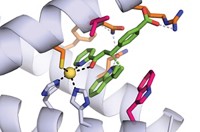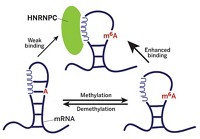Advertisement
Grab your lab coat. Let's get started
Welcome!
Welcome!
Create an account below to get 6 C&EN articles per month, receive newsletters and more - all free.
It seems this is your first time logging in online. Please enter the following information to continue.
As an ACS member you automatically get access to this site. All we need is few more details to create your reading experience.
Not you? Sign in with a different account.
Not you? Sign in with a different account.
ERROR 1
ERROR 1
ERROR 2
ERROR 2
ERROR 2
ERROR 2
ERROR 2
Password and Confirm password must match.
If you have an ACS member number, please enter it here so we can link this account to your membership. (optional)
ERROR 2
ACS values your privacy. By submitting your information, you are gaining access to C&EN and subscribing to our weekly newsletter. We use the information you provide to make your reading experience better, and we will never sell your data to third party members.
Biological Chemistry
Exploring Function With De Novo Proteins
Small structural alterations yield big changes in protein function
by Elizabeth K. Wilson
September 24, 2012
| A version of this story appeared in
Volume 90, Issue 39
A synthetic metalloprotein can be altered slightly to perform an entirely new function, illustrating the potential of these de novo proteins to serve as templates for studying metalloprotein activity (Nat. Chem., DOI: 10.1038/nchem.1454). William F. DeGrado of the University of California, San Francisco, and colleagues started with the di-iron carboxylate protein DFsc, which catalyzes O2-dependent, two-electron oxidation of hydroquinones. Guided by computations, the group made small changes to the binding site of the original protein, substituting four alanines for glycines. The change widened the channel leading to the site, allowing a substrate easier access to the di-iron core. The resulting metalloprotein, G4DFsc, was better able to bind and oxidize 4-aminophenol to its corresponding quinone imine. The group also added a third metal-binding histidine residue to the binding site. This protein, dubbed 3His-G4Dfsc, catalyzed the selective N-hydroxylation of arylamines. In comparing the original and new proteins, the authors write, “we can begin to delineate the roles (geometric and electronic) of individual amino acids in endowing catalytic activities.”





Join the conversation
Contact the reporter
Submit a Letter to the Editor for publication
Engage with us on Twitter